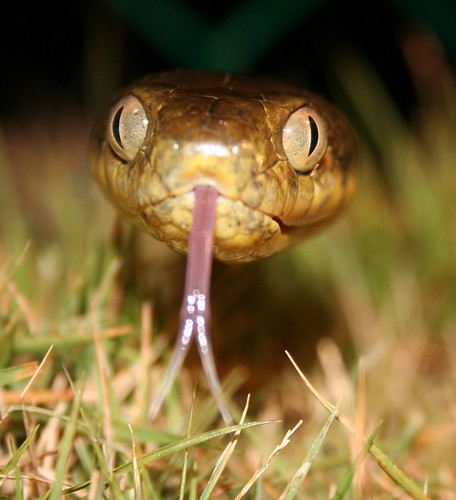
This month USDA highlights some of the important partnerships that work with us to care for our land, air and water. The work stretches into areas and takes USDA employees to places you wouldn’t suspect.
For example, the damage wreaked by invasive brown tree snakes on Guam is hard to imagine.
Infestations of the snake have led to the loss of all but two of the twelve native forest birds on the island, millions of dollars in damages to the island’s electrical power grid, and physical injuries to residents from snake bites.
In December, experts with the USDA-APHIS Wildlife Services (WS) program were honored with the 2015 Project of the Year Award for Resource Conservation and Climate Change from the Department of Defense’s (DoD) Environmental Security Technology Certification Program. The award recognizes WS’ achievements toward the aerial application of acetaminophen-treated baits for the control of brown tree snakes on Guam.
“The successful aerial delivery of toxicant bait is a critical next step toward developing a method for large-area control of the invasive snakes, particularly in remote and inaccessible areas on Guam,” states team leader Dr. Brian Dorr with WS National Wildlife Research Center. “The new technique uses dead mouse baits inserted with 80-mg tablets of acetaminophen which are fatal to the snakes.”
Earlier WS research showed brown tree snakes readily accept dead mice and acetaminophen as bait. The bait is fitted to a biodegradable streamer-like device designed to snag onto branches in the dense tree canopy where the snakes feed. Given the fact that the bait is hung in trees, distributed at low densities, and eaten quickly by the snakes, nontarget species exposure to the bait is very limited.
Given Guam is a large port and home to several military bases, another major concern is the accidental spread of the snakes to other islands, such as Hawaii and Saipan, where they could cause similar damage. The development and use of this innovative, new tool will assist the DoD and others in reducing the environmental and economic risks caused by the snake and potentially aid wildlife restoration efforts on Guam.
To learn more, please visit the National Wildlife Research Center’s brown tree snake webpage and Flickr site.
